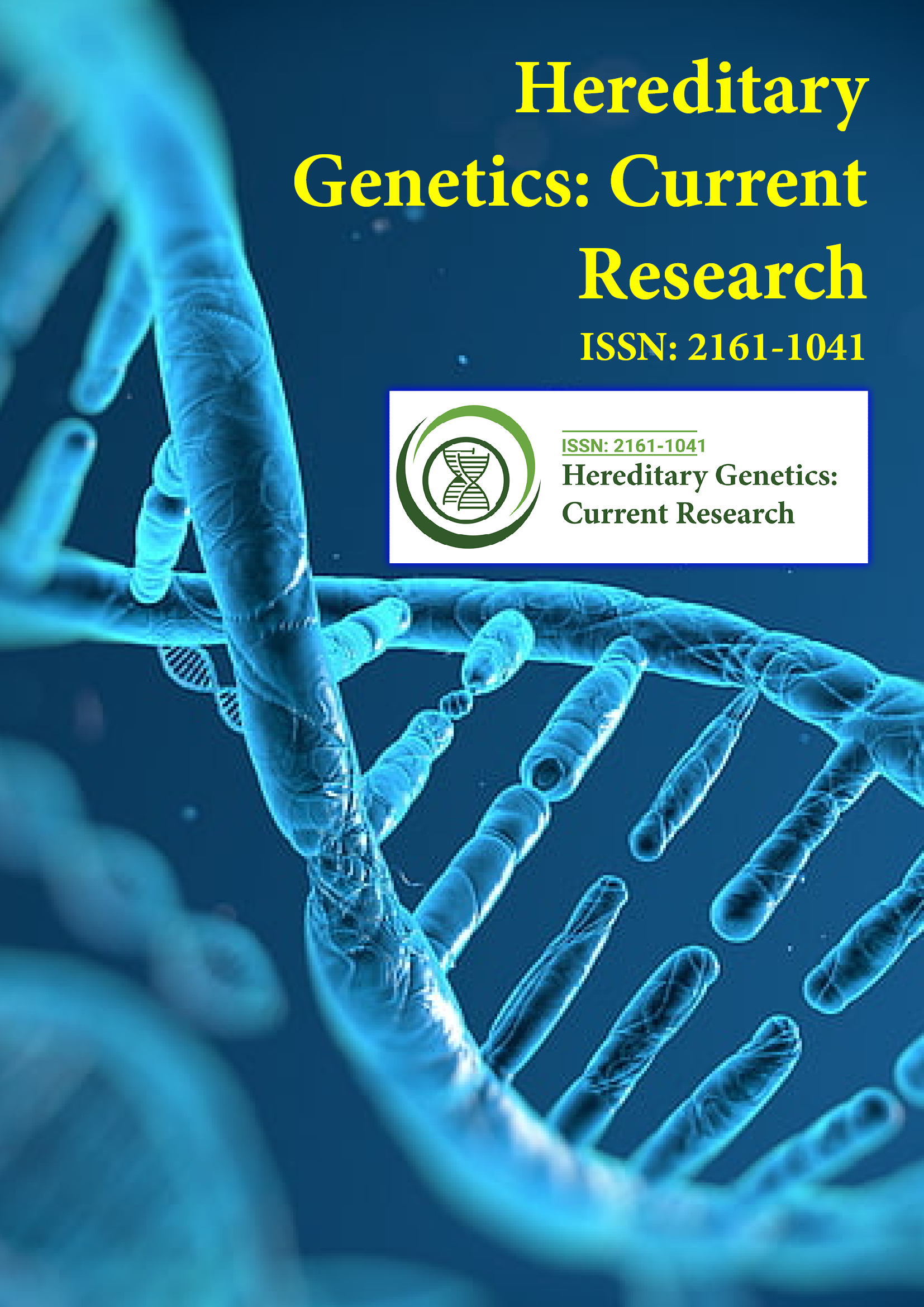ఇండెక్స్ చేయబడింది
- J గేట్ తెరవండి
- జెనామిక్స్ జర్నల్సీక్
- CiteFactor
- RefSeek
- హమ్దార్డ్ విశ్వవిద్యాలయం
- EBSCO AZ
- NSD - నార్వేజియన్ సెంటర్ ఫర్ రీసెర్చ్ డేటా
- OCLC- వరల్డ్ క్యాట్
- పబ్లోన్స్
- జెనీవా ఫౌండేషన్ ఫర్ మెడికల్ ఎడ్యుకేషన్ అండ్ రీసెర్చ్
- యూరో పబ్
- గూగుల్ స్కాలర్
ఉపయోగకరమైన లింకులు
ఈ పేజీని భాగస్వామ్యం చేయండి
జర్నల్ ఫ్లైయర్

యాక్సెస్ జర్నల్స్ తెరవండి
- ఆహారం & పోషకాహారం
- ఇంజనీరింగ్
- ఇమ్యునాలజీ & మైక్రోబయాలజీ
- క్లినికల్ సైన్సెస్
- జనరల్ సైన్స్
- జెనెటిక్స్ & మాలిక్యులర్ బయాలజీ
- నర్సింగ్ & హెల్త్ కేర్
- న్యూరోసైన్స్ & సైకాలజీ
- పర్యావరణ శాస్త్రాలు
- ఫార్మాస్యూటికల్ సైన్సెస్
- బయోఇన్ఫర్మేటిక్స్ & సిస్టమ్స్ బయాలజీ
- బయోకెమిస్ట్రీ
- మెటీరియల్స్ సైన్స్
- మెడికల్ సైన్సెస్
- రసాయన శాస్త్రం
- వెటర్నరీ సైన్సెస్
- వ్యవసాయం మరియు ఆక్వాకల్చర్
- వ్యాపార నిర్వహణ
నైరూప్య
రెండు రష్యన్ కుటుంబాలలో 4q35 క్రోమోజోమ్ తొలగింపుతో ఆటోసోమల్ డామినెంట్ ఫెసియోస్కాపులోపెరోనియల్ మస్కులర్ డిస్ట్రోఫీ
కజకోవ్ వి, రుడెంకో డి, కోలినిన్ వి మరియు పోజ్డ్న్యాకోవ్ ఎ
మేము రెండు ఆటోసోమల్ డామినెంట్ 4q35-లింక్డ్ ఫేసియోస్కాపులోపెరోనియల్ మస్కులర్ డిస్ట్రోఫీ (FSPMD) కుటుంబాలలో కండరాల ఆప్యాయత యొక్క నమూనా యొక్క వివరణను ఇస్తాము, దీనిలో రోగులు వారి మొదటి పరీక్ష తర్వాత 24 - 28 మరియు 35 - 37 సంవత్సరాలలో VK చేత తిరిగి పరీక్షించబడ్డారు. ఈ వ్యాధి ముఖ మరియు భుజం నడికట్టు కండరాల ప్రారంభ ప్రమేయంతో ప్రారంభమైంది మరియు కొంత సమయం తరువాత కండరాల పెరోనియల్ సమూహం (పూర్వ అంతర్ఘంఘికాస్థ) చేరింది. అయినప్పటికీ, రెండు ప్రోబ్యాండ్లలో డిస్ట్రోఫిక్ ప్రక్రియ క్రమంగా తొడల (కండరాల పృష్ఠ సమూహం, అవి), కటి వలయం (గ్లూటియస్ మాగ్జిమస్ కండరాలు, అవి) మరియు పై చేయి (కండరాల బ్రాచి కండరాలు కొద్దిగా ప్రభావితమయ్యాయి) మరియు ముగ్గురిలో వారి బంధువులకు క్లినికల్తో విస్తరించింది. ఫేసియోస్కాపులోపెరోనియల్ (FSP) ఫినోటైప్ కొన్ని పృష్ఠ తొడ యొక్క తీవ్రమైన ప్రమేయం MRI అధ్యయనం సమయంలో కండరాలు వెల్లడయ్యాయి. ఈ కనెక్షన్లో, "ఫేసియోస్కాపులోలిమ్బ్ మస్కులర్ డిస్ట్రోఫీ, టైప్ 2 (FSLD2), ప్రారంభ FSP ఫినోటైప్తో కూడిన "జంప్"తో అవరోహణ రకం" అనే పదం ఫేసియోస్కాపులోపెరోనియల్ మస్కులర్ డిస్ట్రోఫీ అనే పేరుకు బదులుగా మరింత సరైనది. FSP ఫినోటైప్ FSLD2 అభివృద్ధిలో కేవలం ఒక దశ మాత్రమే. కండరాల ప్రమేయం యొక్క CT మరియు MRI నమూనా కండరాల ఆప్యాయత యొక్క క్లినికల్ నమూనాతో పూర్తిగా సంబంధం కలిగి ఉండదు. క్లాసికల్ ఎడి ఎఫ్ఎస్పిఎమ్డి అనేది ఒక స్వతంత్ర క్లినికల్ రూపం, ఇది క్లాసికల్ ఎఫ్ఎస్హెచ్డికి భిన్నంగా ఉంటుంది, అయితే రెండూ 4q35 క్రోమోజోమ్ తొలగింపుతో అనుసంధానించబడి ఉన్నాయి.